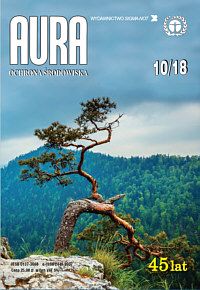
- Expansion of Barycz municipal waste sorting plant in Krakow
Sorting of municipal waste selectively collected Barycz, operating from March 2006 in the Ecological Center Barycz with a storage room, until recently, it created a plant designed for mechanical and manual segregation of the so-called. suicide fraction of municipal waste, in which the technology was based mainly on manual sorbing (automatic sorting was limited to the action of metal separators). The technological line was: a loading node; bag breaker, channel conveyor and elevating conveyor, pre-segregation node; Sorter sorter with preliminary sorting tribune, mechanical basic segregation node; drum sieve - rotary, light fraction separator, coarse fraction segregation node: sorting conveyor, sorting tribune with sorting cabin, reversible transfer conveyor, medium, glass fraction and light fraction segregation node; medium fraction conveyance conveyors, lightweight sorting conveyor, glass shock gutter, conveyor, medium density sorting conveyor ... - Small gardeners in a big city
The author and illustrator of the book is Marta Kula-Ulatowska. For years he has been involved in painting and garden design. The result of these two passions are paintings painted in pastel and acrylic technique, inspired by the nature and space of the arranged garden, as well as rich and colorful gardens. He is a member of ZPAP and Association of Polish Pastelists. She presented her works at numerous group, charity and individual exhibitions in Poland, Europe and the USA. - What the trees roar about
The forest is full of fascinating stories, many of them tell about trees that can be seen thanks to the so-called "forest web". Trees are the most visible inhabitants of forests, but you can also find animals there, with their unusual customs and clever methods of protection against enemies. The forest has many interesting stories and secrets worth discovering. This book is written for the youngest reader. The author offers many solutions and advice to plan trips .... - Higher education responsibility for the challenge of human nature
From the second half of the nineteenth century, intensive human activity continues, which has an unprecedented impact on the natural environment and the environment. Civilization destroys the balance of the Earth. The result of this anthropopressure is nuclear radiation in the soil, the presence of garbage in the oceans, on the bottoms of rivers and lakes, desertification of large areas, a layer of concrete covering the large surface of the globe, and pollution of the atmosfera and even the Earth's orbit. The era of destructive monstrousness of the human-rock has its name: anthropocene. According to some researchers, it began with the emergence of industry, and entered the critical phase in the Cold War years, when a significant increase in the amount of radioactive waste remaining after nuclear weapon tests was noted ...... - Rio - Kyoto - Paris - Katowice: do we have a chance for success?
Probably no one has yet conducted a questionnaire regarding the question: What is the most important message in the history of mankind? We would certainly get a whole range of answers. I am convinced that very few would think about the issue which is the subject of the following article. We live in a time of great Pleistocene-Holocene extinction. Earlier periods of great dying were natural. They were probably caused by climate fluctuations, volcanic activity, changes in sea level, lack of oxygen in the oceans, impact of meteorites or comets. There is a great extinction on Earth today, called the sixth, but first caused by one of the living species.
AURA Ochrona Środowiska (AURA Environmental Protection) - full list






